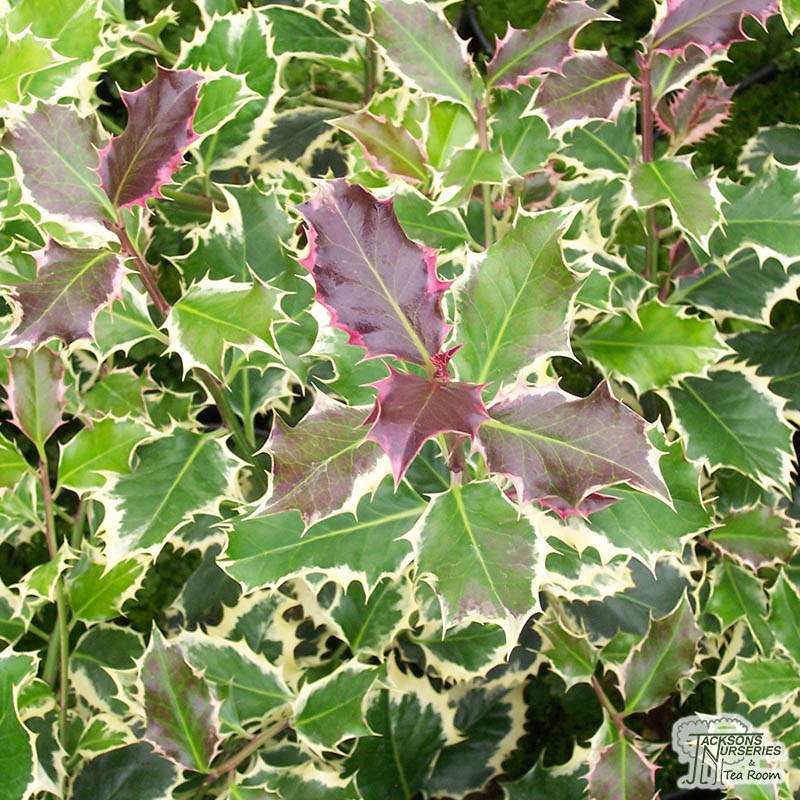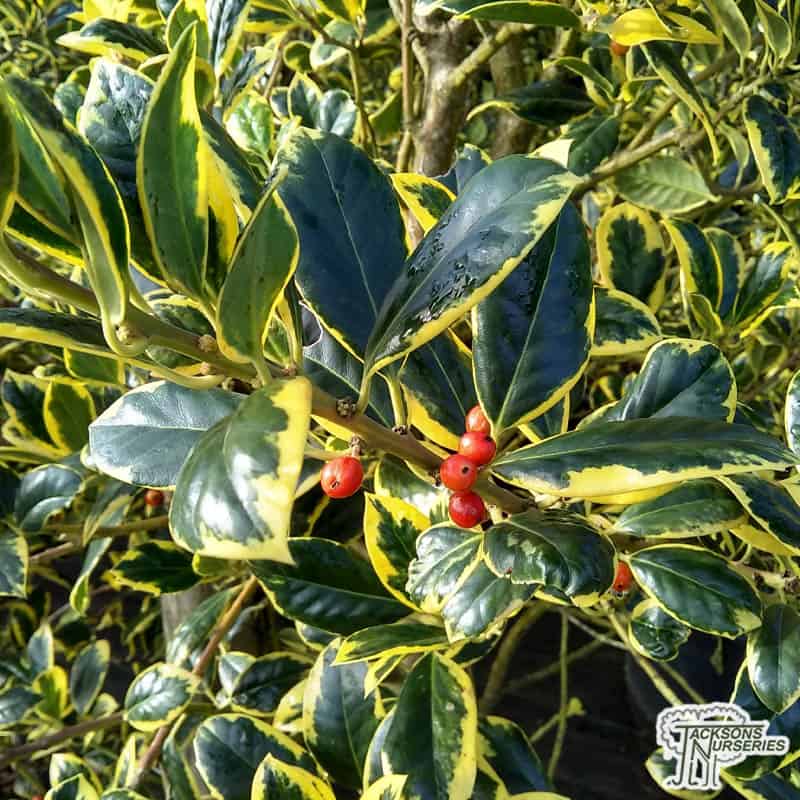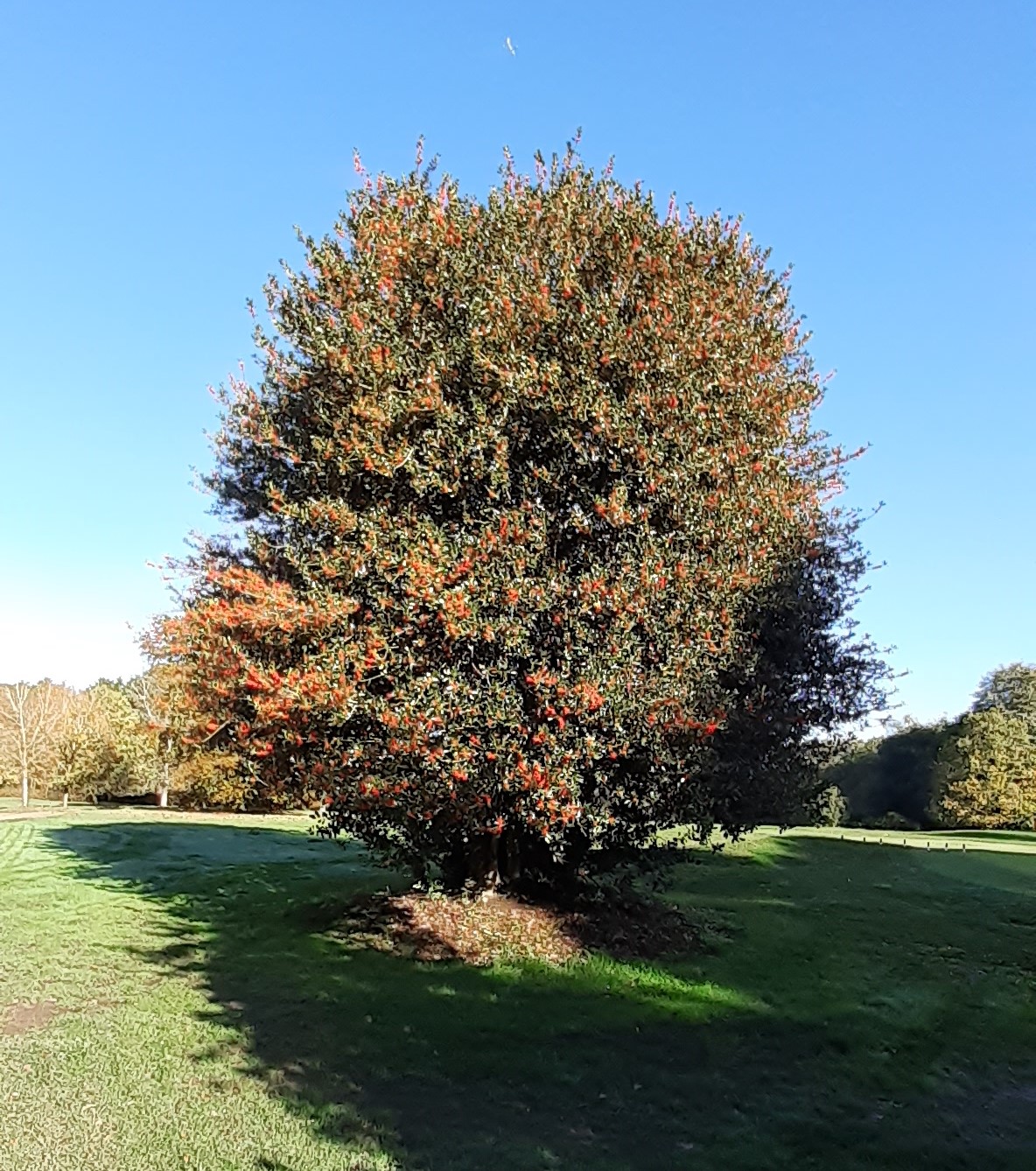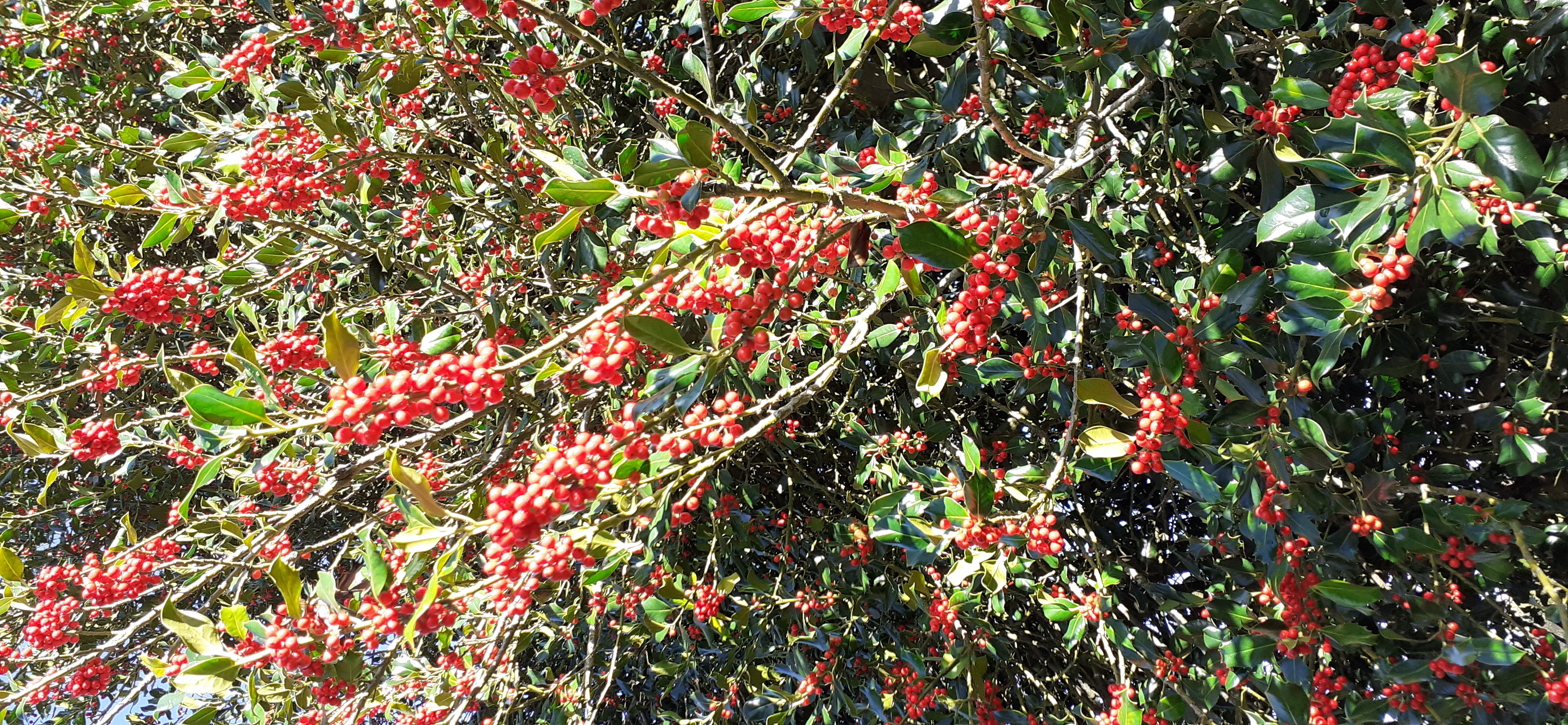With Christmas in the air, this month’s choice is certainly a seasonal favourite – Holly (Ilex). We’ll be seeing plenty of bright red berries on cards, in decorations and adorning tasteful (?) jumpers. However, as the many verses of the famous carol make clear there is much more to holly than the berries. Foliage, flowers and multi-coloured berries make holly a real all-rounder offering interest throughout the year for both gardeners and wildlife.
Hollies don’t just produce red berries. Although they are rarer, plants bearing yellow or orange berries are also available, but for different berry colour, we’d generally recommend Pyracantha or Sorbus (Rowan) rather than holly. One thing to remember is that only female holly plants produce berries. If you are buying a plant this should be clear on the label, but if you have a self-seeded plant you may need to wait a while to see if you will get fruit. Both male and female plants flower, so both are a source of nectar.
Where the variety of options for holly becomes really interesting is in the leaves, where there are not only different tones of green, but also a wide range of variegations giving multi-coloured leaves. ‘Silver Queen’ and ‘Golden King’ are two popular cultivars, whose names give a clear indication of the colours within the variegation. Rather more confusingly “Silver Queen” is male so won’t bear berries, while “Golden King” is female, so it will. Below are pictures of “Silver Queen” and “Golden King” from Jackson’s Nurseries


While some hollies definitely do bear “a prickle, as sharp as any thorn” they are not all vicious, as you can see above. You can choose from very prickly to virtually smooth depending on how you want to use the plant. You might want a boundary hedge to be spiky, which will help to provide cover for birds, but for something closer to lawns or buildings you may well want something a bit less fierce.
What about holly’s partner in the carol – ivy? Well, it is not exactly our favourite, but it can be very useful. We are not keen on its invasive nature, if left to run wild it can soon take over and can overwhelm other plants. It is one of the few plants that can overwhelm an evergreen honeysuckle and it can be a serious problem if it becomes established in tree canopies depriving the tree’s leaves of light. It is sometimes thought to damage walls, but this rarely happens and is very unlikely on a wall in good condition. In fact, there is emerging research that ivy clad walls can help to moderate temperatures inside buildings, by providing extra insulation.
Ivy is undeniably a great plant for supporting wildlife providing both nectar and berries late in the season. If you have the right space to grow it (and keep an eye on it) ivy will certainly help to support the biodiversity in your garden.
It is worth noting that while ivy is climbing it retains a juvenile form, but once it reaches free air, for example at the top of a fence or wall then it matures to produce flowers and fruit.


